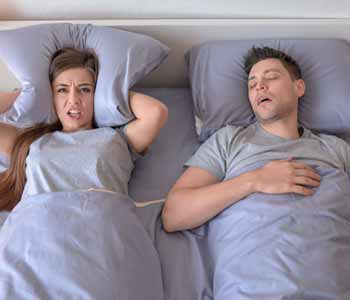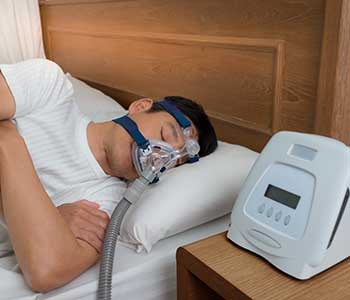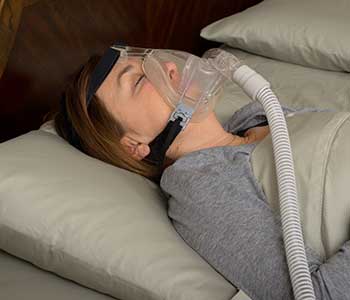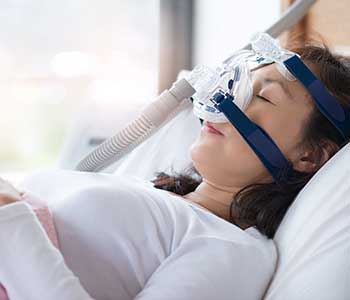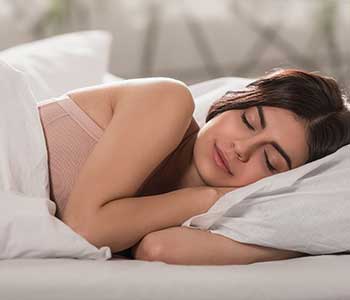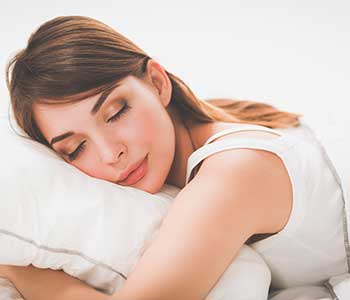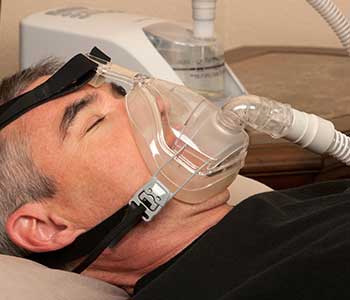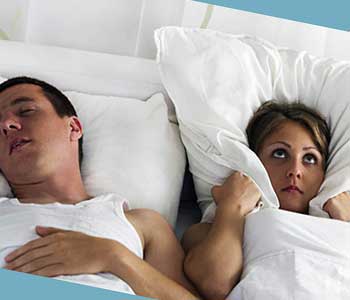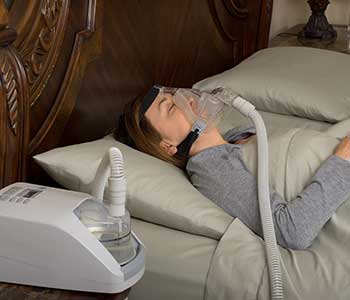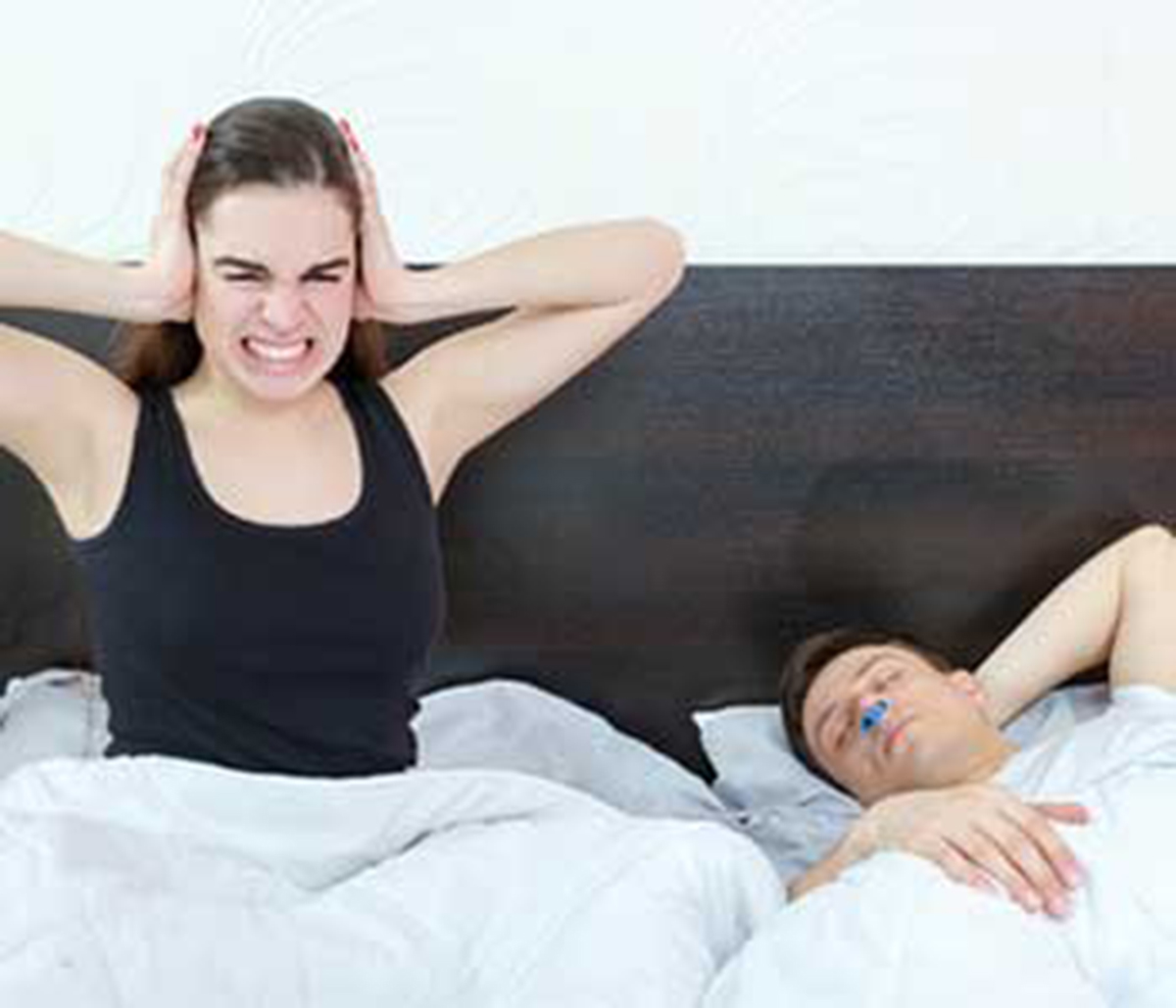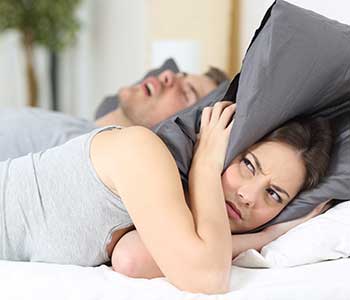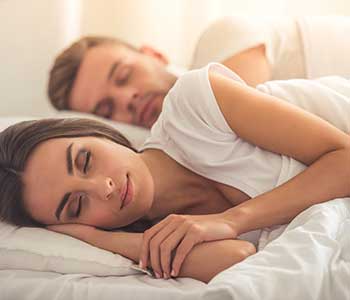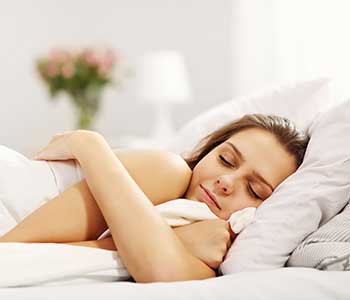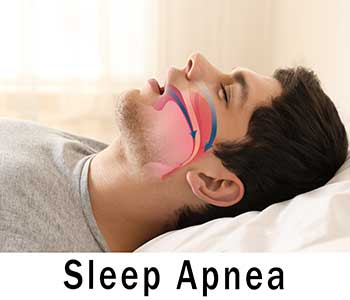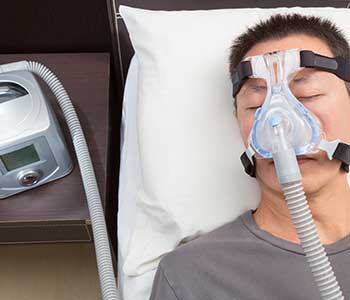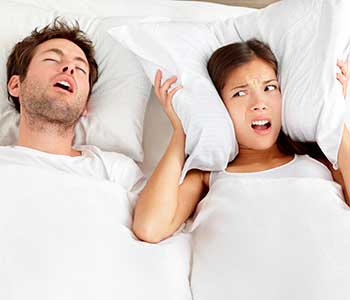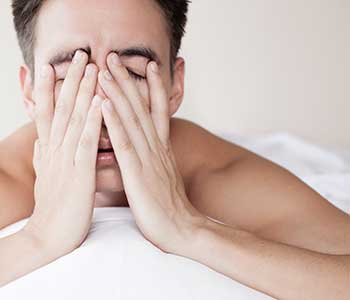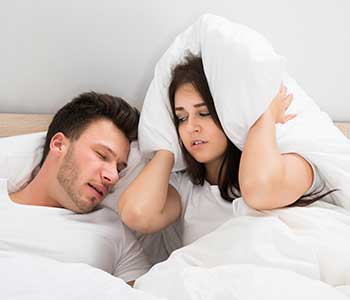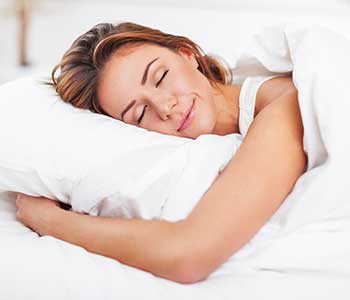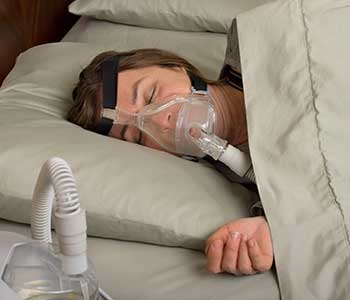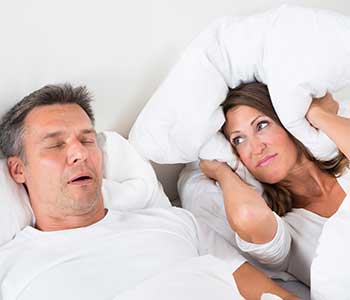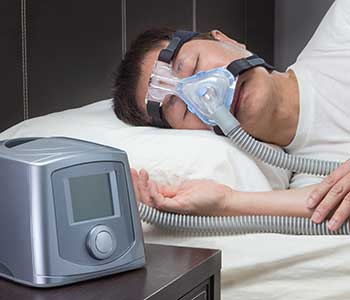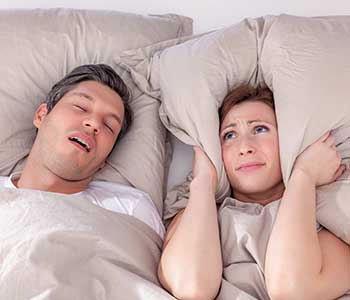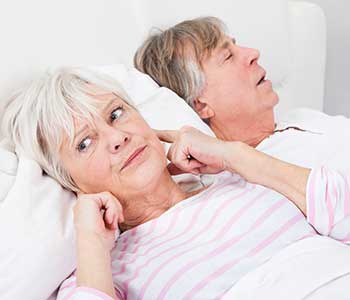Snoring and Sleep Apnea
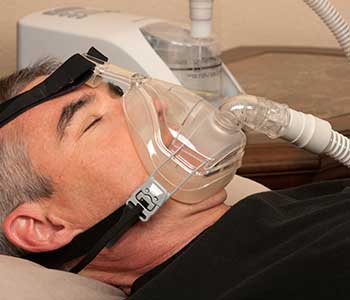
How Are Snoring and Sleep Apnea Related?
Although snoring may only be a benign nuisance to your bed partner, it may also be a symptom of a more serious sleep disorder called Obstructive Sleep Apnea or OSA.
What Is Sleep Apnea?
Sleep apnea is characterized by periods where breathing completely stops for 10 seconds or more when sleeping. Of the two types of sleep apnea, central and obstructive, dentists have the ability to help patients with their OSA. In OSA, this cessation of breathing is caused by some obstruction in the mouth and throat.
Recommended video for Oral Appliance Therapy
What Is Sleep Apnea?

Mike Jones – “I have not had a good night’s sleep for a long time. I would wake up constantly during the night, my wife would wake me up during the night because I would be snoring so loud she could not sleep.” Besides disturbing the bed partner’s sleep, snoring can be an indicator of a more serious disorder: Obstructive Sleep Apnea or OSA, a sleep breathing disorder with very serious consequences. Marcia Ferer – “I went to my primary doctor saying that something is really wrong with me.” Marcia Ferer has sleep apnea. It took years of exhaustion for her to finally get diagnosed. “Entirely without energy, and I have felt this all my life, when I woke up I was actually more tired, and lethargic and lazy than when I went to sleep.” Eighteen million people in the USA like Mike and Marcia have OSA. “Most people who have apnea do not know that they have apnea. It is a stoppage or cessation of breathing while they are sleeping.” Dr. Wesley E. Fleming, medical director at the sleep center of Orange County in Irvine California, says besides impacting daytime function, OSA is linked with an array of serious health risks. “Long term consequences of not treating sleep apnea appropriately includes: diabetes, heart disease, stroke and dying early.” Patients often have symptoms of depression, and like Mike, it can affect their relationships and career. Mike – “I would get frustrated because when I am affecting another person, my wife, and now she is not getting a good night’s sleep, so she is not happy, I am not getting a good night’s sleep so I am not happy because I am not productive, I do not have a lot of energy.” What is worse is that up to 90 percent of patients with sleep apnea are undiagnosed or not being treated. Help is at hand however, obtaining a diagnosis is straightforward, and there are a number of effective treatments for sleep apnea. “There are four options for treating sleep apnea, something called C-PAP therapy which is a mask that you wear around your nose when you are sleeping at night time. There is an oral appliance such as the SomnoMed Oral appliances. There are surgical options for sleep apnea, and then sometimes weight loss can be very effective as well.” C-PAP is a treatment that is often prescribed for sleep apnea. A C-PAP machine attaches to the patient via a hose and mask that blows air through the nose and keeps the airway open with continuous pressure. While effective, many patients understandably have difficulty using the machine long term. “Often patients have difficulty sleeping or adjusting to this type of therapy. The C-PAP mask can irritate the bridge of the nose, it can be associated with dry mouth, it can irritate the skin around the nose, and sometimes patients are intolerant to the high pressures that are needed.” Both Marcia and Mike have tried the C-PAP. “I thought I was going to die of claustrophobia.” “You know, it was uncomfortable, it was cumbersome, I didn’t feel like I could sleep comfortably.” “I didn’t have it on too long because it was just something I could not emotionally put up with.” They were introduced to the best alternative to C-PAP therapy: The SomnoDent MAS. It is an appliance placed in the mouth when the patient goes to bed that holds the lower jaw forward. This provides support to the airway and keeps it open during sleep. “It has changed my life. I have so much more energy, I wake up I get up early, go work out in the morning, at work I have energy all day, after lunch tons of energy, I don’t get tired, I stay up till 10 or 11 o’clock, I am the last one to go to bed.” “The first two nights or three mornings, when I woke up, there was so much energy that I was worried again! I thought something is wrong here because I have never felt that kind of energy.”
“Those things appeal to the patient, and my experience with that, if it appeals to the patient, then they will wear the device. If they wear the device, then we can have success.” Marcia went to Dr. Gerald Kushner, a SomnoMed preferred dentist, to have her SomnoDent MAS appliance fitted — a move Dr. Fleming says is crucial. “I’ve seen on television where they have these devices where you can boil them and bite them, and what I find is that they are first of all ineffective, and secondly they can actually irritate, or harm the Temporomandibular joint — your jaw joint.” Additionally these boil and bite appliances are not approved to treat obstructive sleep apnea — they only treat snoring. The deadly condition is left untreated. The SomnoDent MAS is clinically proven and FDA cleared to treat obstructive sleep apnea. Dr. Warren Schott is also a SomnoMed preferred dentist. He works hand-in-hand with sleep physicians to find the best treatment for his patient’s OSA and is constantly monitoring his patient’s treatment with oral appliances. In his opinion, SomnoDent MAS is the best appliance available for treating obstructive sleep apnea. “I think it is more comfortable for the patient; it is in two pieces so that it allows the patient to open and close — if they are in bed and the phone rings, they can easily answer the phone or if you want to have a sip of water it is easily accomplished without taking the appliance out.” The SomnoDent MAS is the acknowledged industry leader in oral appliance therapy for obstructive sleep apnea. Oral appliance therapy has gained a much larger profile in recent years thanks to a 2006 position paper released by the American Academy of Sleep medicine, the governing body for sleep physicians in the USA. The paper states that oral appliances are indicated for use in patients with mild to moderate OSA, who prefer them to C-PAP therapy, or who do not respond to, are not appropriate candidates for, or who fail treatment attempts with CPAP. “An oral appliance is really good for somebody who suffers from what we call upper airway resistance syndrome, or mild to moderate sleep apnea, and it is also really good for people who won’t wear their C-PAP.” “There is an answer to every problem. You just have to ask the right person, and so the right person probably starts with the sleep specialists.” If you think that you might have a sleep disorder and you have not seen a sleep specialist, make an appointment today! “My wife found an advertisement in a magazine for Dr. Schott and she encouraged me to go to see him because she said this looks like something that you would do. It is easy; doesn’t take a lot of time.” If you have already had a sleep study done and have given up on treatment, try asking for the SomnoDent MAS oral appliance as a better alternative. “Go to the doctor and talk to him about getting this device. It will change your life.” “If you believe you have sleep apnea, get diagnosed and get treated and you will benefit, you will feel better, it will be the best thing you have done with your life.”
Just listen to what SomnoDent’s happy patients are saying. Patricia writes, “SomnoMed has changed my life. I am sleeping through the night and am dreaming again!” John tells us, “One of the best benefits to me is the ability to cuddle all night with my girlfriend. You can’t do that with C-PAP.” Darlene says, “SomnoDent has given me a new lease on life.” And Juanita says, “This is truly an answered prayer for me. I feel it has given me my life back.” To become one of these happy patients and instantly improve your quality of life, please visit our website – www.somenomed.com or ask your doctor or dentist for the SomnoDent MAS therapy.
What Are The Health Risks of Sleep Apnea?
Excessive Daytime Sleepiness or EDS is a common symptom of OSA. This is caused by the lack of oxygen to your body that results in waking hundreds of times a night and thereby preventing a full restful night of sleep. The person may not even realize that this is occurring. Other consequences of this lack of oxygen are the increase in blood pressure that can lead to heart attack and stroke, the tendency towards diabetes, headaches, weight gain, and stress.
How Is Sleep Apnea Treated?
Besides some behavioral changes that you do on your own and the surgical treatments that are performed by your physician, there are two non-surgical methods to manage sleep apnea. One is a mask that fits over your face called Continuous Positive Airway Pressure or CPAP. The second is an oral appliance made by a dentist that can be custom fitted to your teeth. Then working in conjunction with your physician, the oral appliance is adjusted for both comfort and effectiveness.
Want to learn more about Sleep Apnea?

Do you snore excessively? Do you suffer from daytime fatigue? Do you awake during the night with shortness of breath? You might suffer from the life threating sleep disorder known as sleep apnea. About 1 in every 15 Americans suffer from sleep apnea, and it’s a problem that many don’t even realize they might have. But what does this have to do with dentistry? Because sleep apnea is caused by an airway disruption, the disorder can be treated through the mouth. The Thornton adjustable positioner, or tap appliance, is one of the more popular ways to treat sleep apnea. When the jawbone is lax, the tongue and soft tissue obstruct the airway. The tap appliance advances the jawbone, allowing the air to flow freely and making sleep more restful throughout the night. If you think you might suffer from sleep apnea, talk to your dentist today about possible treatment options.
Will An Oral Appliance Work For Me?
Although CPAP is the most effective way to deliver oxygen, studies show that patient compliance with CPAP may only be 29% and lower. Oral Appliance Therapy or OAT can work well in mild to moderate forms of OSA, and can sometimes help with even severe forms of OSA. Your dentist can help you understand what to expect with OAT.

